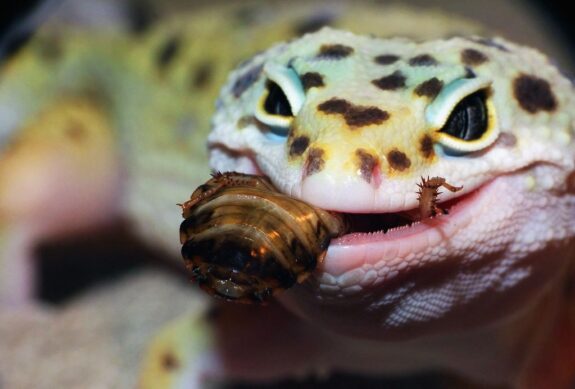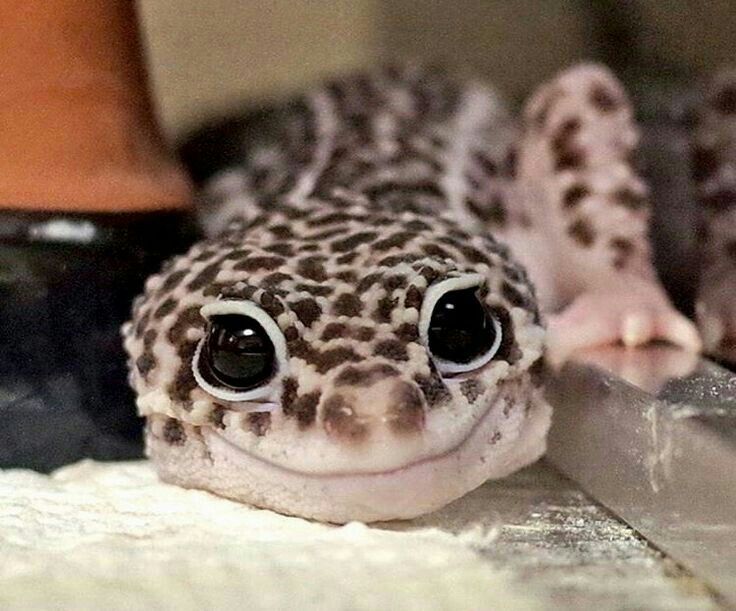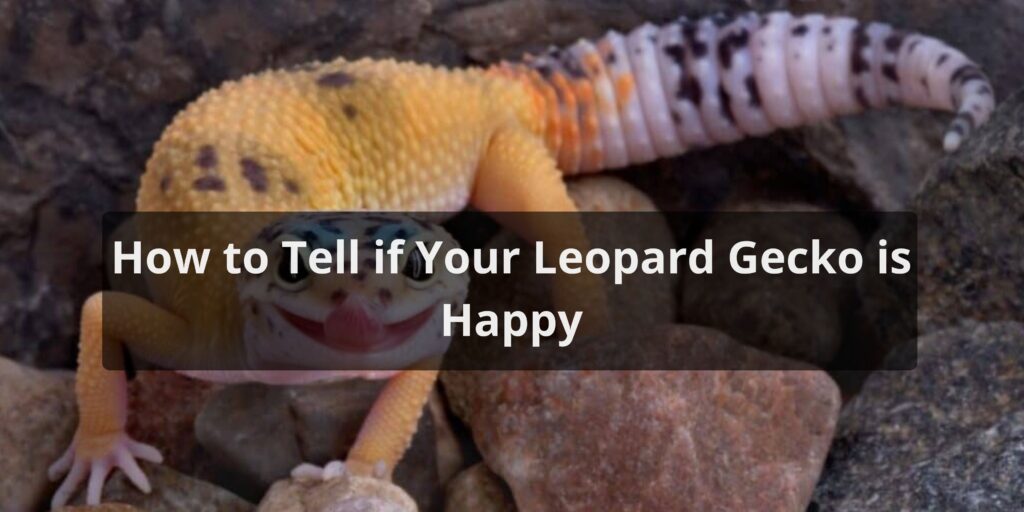Leopard geckos make great pets for reptile enthusiasts of all experience levels. They are generally docile, have simple care requirements, and exhibit some very charming behaviors. However, since leopard geckos can’t vocalize their feelings like a dog or cat, it can sometimes be hard to tell if your leopard gecko is happy and healthy. Here are some of the main signs that how to tell if your leopard gecko is happy and enjoying life in your home:
Eating Well

One of the most basic signs that a leopard gecko is happy is a good appetite. These lizards are insectivores, meaning they thrive on a diet of insects. A happy, healthy leopard gecko will readily eat appropriately-sized feeder insects like crickets, mealworms, or dubia roaches. You should offer food to your gecko every day and watch to make sure they are eating. A disinterest in food or weight loss can be a red flag of illness or stress.
As long as your gecko is eagerly consuming their insect diet each day, it’s a great indicator that they are content in their environment. A properly fed leopard gecko should also have a plump tail base that stores their fat reserves. This fat reserve is crucial for their health.
Natural Behaviors

Leopard geckos engage in many comforting, natural behaviors when they are relaxed in their habitat. Here are some behaviors to watch for:
- Climbing and exploring their enclosure
- Burrowing in warm, humid hide boxes
- Shedding skin about once per month
- Licking eyes and nose to stay clean
- “Waving” when they want your attention
If your gecko is exhibiting normal, natural behaviors like moving around their home and staying groomed, it’s a good sign they are stress-free. You want your pet to act like a leopard gecko, not hide all day.
Interacting with You
While leopard geckos aren’t as overtly social and affectionate as some pets, they can become quite comfortable with their owners. A leopard gecko that enjoys your presence and handling is likely a happy one.
Signs your leopard gecko is bonding with you include:
- Tolerating being handled
- Exploring out of their tank when handled
- Taking food from your hand
- Making eye contact with you
A gecko that hisses, whips their tail, or lashes out is feeling threatened. But a calm, tolerant gecko enjoys your company. With regular handling and interaction, you can form a trusting bond.
Bright, Alert Eye

Your leopard gecko’s eyes can also give clues about their health and happiness. Their eyes should be:
- Round and bulging (not sunken in)
- Clear and free of discharge
- Bright and attentive, with black slit-like pupils
Eyes that are closed or partially closed during the day may indicate illness or stress. Alert, wide-open eyes are a good sign your leopard gecko is feeling well.
Proper Housing
While the above signs reflect your leopard gecko’s health at any given time, you also need to provide proper housing for long-term happiness. Some habitat factors that can lead to stress include:
- Tank size too small (under 20 gallons)
- Lack of hiding spots and plants
- Substrate that is unsafe for ingestion
- No temperature gradient from warm to cool
- No humidity hide box
Ensuring your leopard gecko has an appropriate home is the foundation for a healthy, thriving pet. Research their basic care needs and make adjustments if you notice signs of chronic stress.
With proper handling, habitat, and diet, a leopard gecko can live a long, fulfilling life as a pet. By watching your gecko’s behavior and physical signs, you’ll get a good sense of their mood and how to provide optimal care. If in doubt about their health, always consult an exotic vet. But in general, an eating, active gecko is a happy gecko!
Conclusion
Determining a leopard gecko’s happiness takes some careful observation of their behaviors, environment, appetite, and appearance. Signs like a healthy appetite, natural activity patterns, clear eyes, and tolerating handling all indicate your gecko is stress-free and content. Providing the proper housing set-up and diet gives them a base level of comfort. Get to know your individual leopard gecko’s quirks and you’ll be able to tell when they are thriving or need a bit of adjusting to be in top health. With their simple care needs met, leopard geckos can make one of the most enjoyable and rewarding reptile pets.
FAQs About How to Tell If Your Leopard Gecko Is Happy
What are the signs of a happy leopard gecko?
A happy leopard gecko exhibits behaviors like active exploration, smooth skin, and a healthy appetite. It will bask under its heat source, show curiosity, and have clear, bright eyes. Content geckos often shed regularly and have well-maintained tails.
How can I tell if my gecko is stressed or unhappy?
Stressed or unhappy geckos may display signs like hiding excessively, loss of appetite, or erratic movements. Their skin might appear dull, and they could develop health issues. Prolonged stress can lead to weight loss, so it’s crucial to address any signs promptly.
Do leopard geckos show affection or bond with their owners?
Leopard geckos don’t exhibit affection in the same way as mammals, but they can recognize their owners’ presence. Over time, they may become more accustomed to handling and show reduced stress during interactions. While not affectionate in a traditional sense, they can form a bond based on trust and familiarity.
What is the role of environmental enrichment in their happiness?
Environmental enrichment is vital for a happy leopard gecko. It includes providing a diverse habitat with hiding spots, climbing opportunities, and different textures to explore. Enrichment activities like hunting for live prey and rearranging their enclosure can stimulate their natural behaviors and contribute to their well-being.
Can the gecko’s behavior indicate its emotional state?
Yes, a leopard gecko’s behavior can provide insights into its emotional state. Observing their activity level, appetite, and how they respond to handling or changes in their environment can help you gauge their mood. Paying attention to these cues is essential for ensuring their happiness and overall health.



